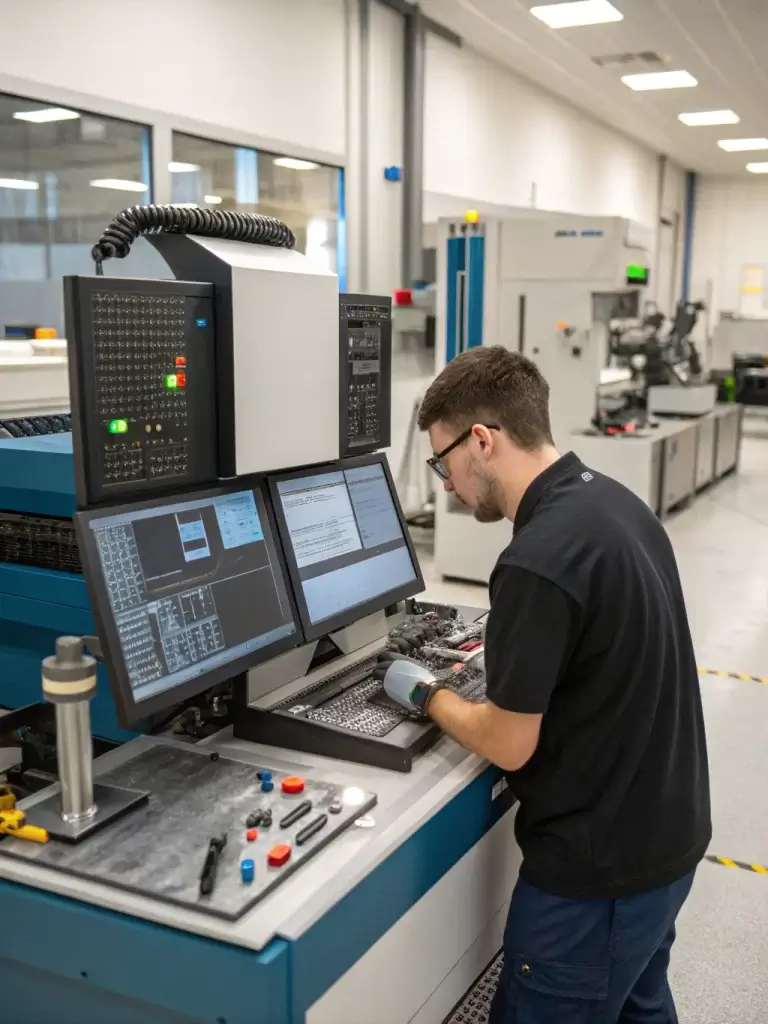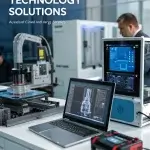Introduction
Did you know that 73% of businesses lose an average of $5,600 per minute during technology downtime? This staggering statistic reveals why advanced technical services have become the backbone of modern enterprise operations. Yet surprisingly, only 31% of organizations have optimized their technical support strategies to effectively address complex issues. As technology ecosystems grow increasingly sophisticated, the ability to quickly resolve intricate technical problems isn’t just beneficial—it’s essential for survival. The difference between industry leaders and laggards often comes down to how effectively they implement advanced technical services to overcome technical challenges that would otherwise cripple operations.
Table of Contents
Core Features
Advanced technical services distinguish themselves through several key features that set them apart from basic technical support:
- Multi-layer Diagnostics – Utilization of sophisticated diagnostic tools that analyze issues across hardware, software, and network layers simultaneously
- Predictive Problem Resolution – AI–powered systems that identify potential failures before they occur
- Cross-platform Expertise – Technical specialists versed in multiple operating systems, cloud infrastructures, and specialized applications
- Root Cause Analysis – In-depth methodologies that address underlying issues, not just symptoms
- Customized Solution Development – Tailored fixes that account for unique business environments
- Knowledge Base Integration – Centralized repositories of historical solutions and approaches
- Continuous Monitoring – Real-time surveillance of critical systems with immediate intervention capabilities
Specifications & Requirements
Implementing effective advanced technical services requires specific components:
- Personnel Requirements: Tier 3+ technicians with cross-functional expertise and minimum 5+ years of experience
- Tool Infrastructure: ITSM platforms, automated diagnostic systems, and collaborative resolution dashboards
- Process Framework: ITIL v4 or comparable methodology for standardized approach to complex problem management
- Response Parameters: SLAs defining maximum resolution windows (typically 4-24 hours for critical issues)
- Documentation Systems: Comprehensive logging tools for tracking resolution pathways and building institutional knowledge
- Security Clearances: Appropriate credentials for accessing sensitive systems and data environments
- Scalability Resources: On-demand access to specialized expertise for unusual or unprecedented technical challenges
How to Use / Set Up
H3: Establish Your Technical Command Center
Begin by creating a dedicated environment for your advanced technical operations. Unlike standard help desks, your command center should feature multiple monitoring screens, collaborative work zones, and direct access to development environments. Configure this space to support both virtual and physical interactions, as 64% of complex issues require cross-team collaboration.
H3: Implement Progressive Escalation Protocols
Design a tiered escalation system that intelligently routes complex issues to the appropriate specialists. Your protocol should include trigger thresholds based on issue complexity, business impact, and resolution timeframes. Personalize this system to your organization’s unique technical landscape, incorporating automated routing for common complex issues and manual overrides for unprecedented situations.
H3: Deploy Advanced Diagnostic Toolsets
Equip your technical team with sophisticated diagnostic tools that provide granular insights across your technology stack. Move beyond generic monitoring by implementing specialized tools for database performance analysis, network packet inspection, and code execution tracing. The most effective teams customize their diagnostic suites to match their specific technology environments.
H3: Create Knowledge Management Systems
Develop comprehensive knowledge repositories that capture resolution pathways for complex issues. Unlike basic knowledge bases, advanced systems should include decision trees, configuration snapshots, and video demonstrations of resolution techniques. Your unique business context should inform how this knowledge is organized and accessed.
Performance Insights
Organizations implementing structured advanced technical services report impressive outcomes. According to recent industry data:
- 87% reduction in mean-time-to-resolution for complex technical issues
- 64% decrease in recurring problems through comprehensive root cause analysis
- 42% improvement in overall system availability
- 3.8x ROI on advanced technical service investments within 18 months
- 76% reduction in escalations to vendor support
- 91% increase in first-time-right resolutions for multi-system issues
Compared to industry standards, elite technical service teams resolve complex issues 5.8 times faster than average performers, with 73% fewer resources committed per resolution.
Pros and Cons
Advantages:
- Dramatic reduction in business impact from technical failures
- Enhanced business continuity during system disruptions
- Improved customer satisfaction through faster issue resolution
- Decreased technical debt through proper root cause remediation
- Better resource utilization through targeted expertise application
Limitations:
- Higher initial investment in specialized personnel and tools
- Potential complexity in establishing cross-functional processes
- Knowledge retention challenges when key personnel depart
- Risk of over-engineering solutions to routine problems
To overcome these limitations, consider implementing junior-senior pairing programs, documentation gamification, and tiered service models that reserve advanced resources for truly complex scenarios.
Use Cases
Advanced technical services excel in diverse scenarios:
Financial Services: When a banking platform experiences intermittent transaction failures that bypass standard monitoring, advanced teams use session replay technology combined with database forensics to identify timing issues in distributed transaction processing.
Healthcare: When hospital networks face interoperability challenges between critical systems, advanced technical services implement specialized protocol analyzers and create custom interface engines to ensure seamless data exchange.
Manufacturing: When production line systems experience mysterious stoppages, advanced teams deploy IoT sensors and perform real-time analytics to correlate environmental factors with system performance.
Common Mistakes to Avoid
- Tool Overreliance: Depending solely on diagnostic software without developing human analytical skills
- Siloed Expertise: Failing to create cross-functional teams that can address interconnected systems
- Reactive Posturing: Waiting for catastrophic failures rather than monitoring leading indicators
- Documentation Gaps: Neglecting to capture resolution processes for knowledge transfer
- SLA Fixation: Focusing on time metrics rather than quality of resolution and recurrence prevention
- Tribal Knowledge: Allowing critical expertise to remain undocumented and concentrated in few individuals
- Scope Creep: Attempting to solve peripheral issues during critical incident resolution
Maintenance & Updates Tips
Keep your advanced technical services at peak effectiveness by:
- Conducting quarterly skills assessments to identify expertise gaps
- Implementing monthly “resolution retrospectives” to refine approaches
- Creating shadowing programs where junior staff observe complex resolutions
- Establishing vendor management processes for coordinated external support
- Developing simulation exercises for rare but critical failure scenarios
- Building automation for routine aspects of complex issue resolution
- Reviewing and updating technical documentation after each major resolution
Conclusion
Advanced technical services represent the difference between organizations that merely survive technical challenges and those that thrive despite them. By implementing the seven secrets outlined in this guide—from multi-layer diagnostics to continuous monitoring—you can transform how your organization addresses complex technical issues. The investment in sophisticated technical service capabilities yields returns far beyond simple problem resolution, creating competitive advantages through superior system reliability and performance.
Ready to revolutionize your technical support capability? Begin by assessing your current technical service maturity and identifying your highest-impact improvement opportunities. Your technology ecosystem—and your bottom line—will thank you.
FAQs
How do advanced technical services differ from standard IT support?
Advanced technical services focus on complex, multi-system issues requiring specialized expertise, root cause analysis, and customized solutions, unlike standard support which typically addresses known issues with established resolutions.
What qualifications should advanced technical service personnel have?
Look for professionals with deep expertise in multiple technology domains, demonstrated problem-solving abilities, advanced certifications (like CISSP, CISA, or specialized vendor certifications), and experience resolving enterprise-grade technical challenges.
How can I measure the ROI of investing in advanced technical services?
Track metrics including reduction in mean-time-to-resolution, decrease in recurring issues, improvements in system availability, reduced escalations to vendors, and business impact mitigation during technical incidents.
Should advanced technical services be in-house or outsourced?
This depends on your organization’s size, technical complexity, and resource availability. Many organizations implement a hybrid model with in-house teams for company-specific systems and outsourced specialists for niche technologies.
How often should we update our advanced technical service capabilities?
Review your technical service capabilities quarterly, with major reassessments annually to ensure alignment with evolving technology environments and business requirements.



